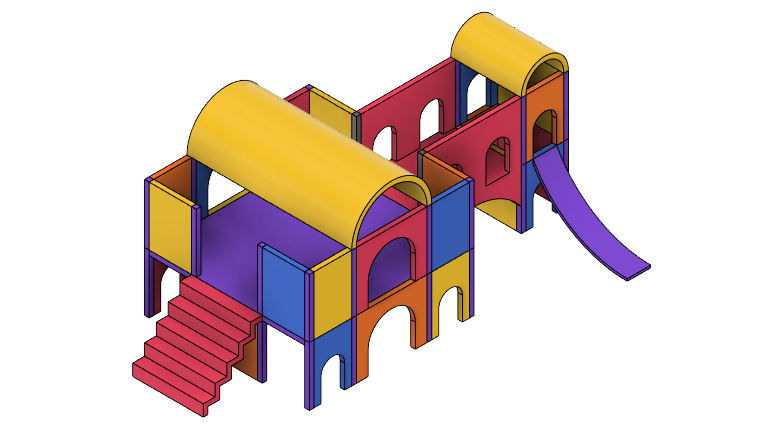The Problem
More than 80% of women have faced street harassment while running. This leaves lone female runners feeling unsafe, especially in the city, and can deter them from the sport.
The Skills
- Fusion 360 CAD
- FDM 3D-printing
- Product development process understanding
- Electronic and software integration
- Parametric CAD
The Generate Project
KLIP is a small device that clips onto clothing and can discretely alert emergency contacts and authorities at the press of a button. The device is controlled by an app where the emergency contacts can be set; the app also connects users to a community where women can share experiences, addressing the issue that 94% of women who are harassed on the street don't receive any help afterwards.
Check out this article about KLIP Tech and its founders.
The client's reference CAD.
KLIP Tech's founders came to Generate with the product idea and a general idea of the ideal size & weight. They handed us a proof of concept CAD model, but gave us complete freedom for a redesign. The mechanical, electrical, and software design work was left completely up to our team. The hardware team was composed of 2 mechanical engineers, 2 electrical engineers, and 1 product designer, working alongside a 9 person software team.
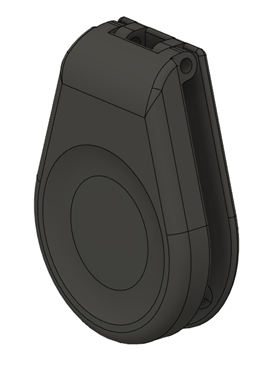
Spring hinge model
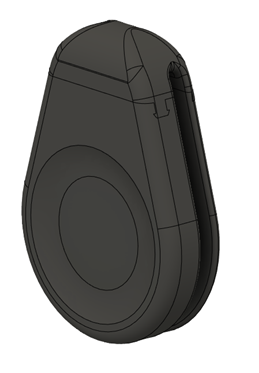
Living hinge model
The Process
Phase 1 Development
Phase 1 development for the mechanical team focused on making design decisions regarding shape and feel of the device, as well as mechanism selection for the hinge, clip attachment, and the button. The goal was to create a phase 1 prototype that could be user tested.
We explored different hinge mechanisms for the clip, landing on two design possibilities: a soft living hinge or a spring loaded hinge. We prototyped devices using each of these mechanisms for user testing.
One of the biggest challenges was prototyping the living hinge with rigid 3D-printed parts. After testing many different filaments & resins, we ended up having to separate the living hinge clip into 3 different parts, so that we could print the device faces in rigid PLA and the the hinge itself in a more flexible resin.
Intermediate designs
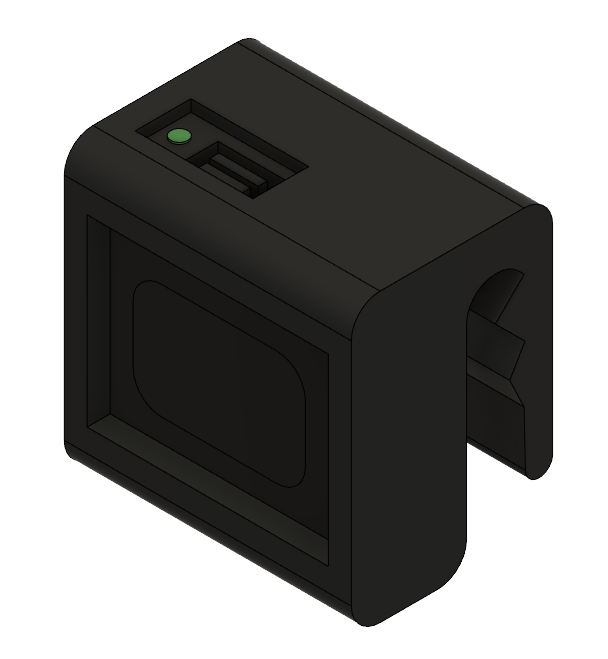
Initial brainstorm
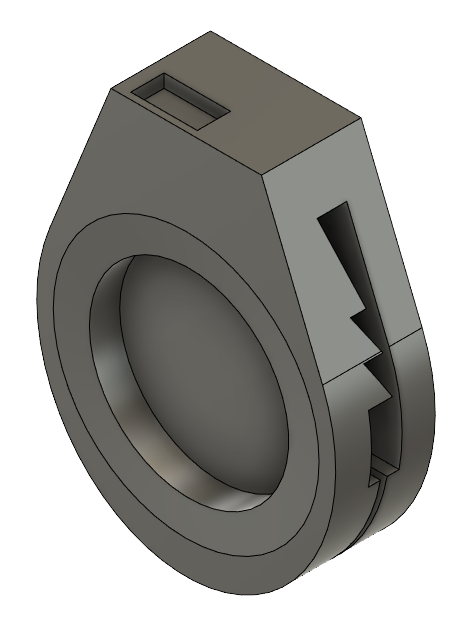
Living hinge design
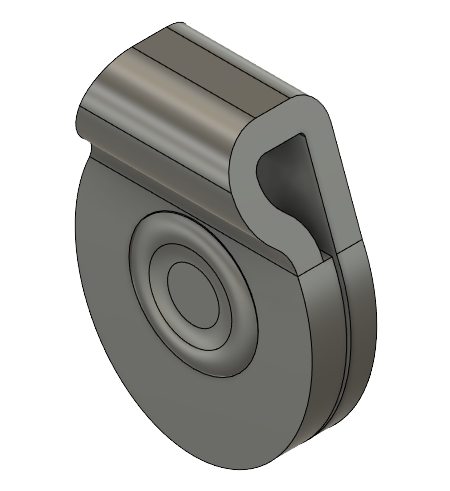
Living hinge design
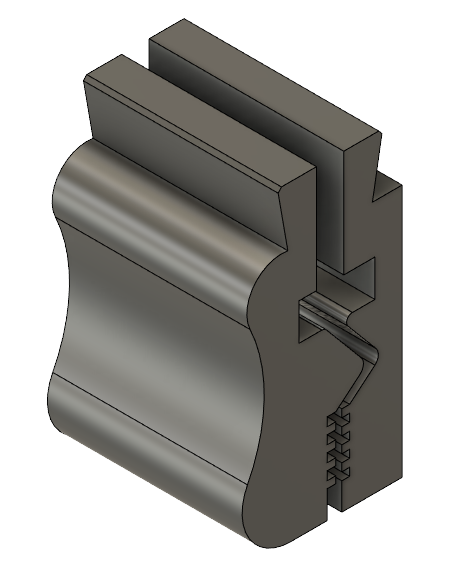
Spring hinge design
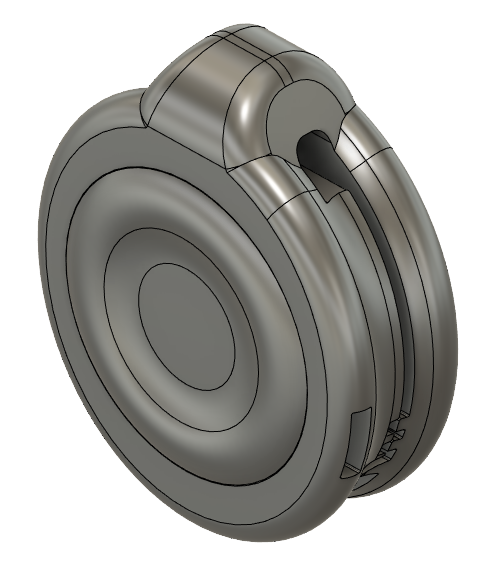
Round living hinge design
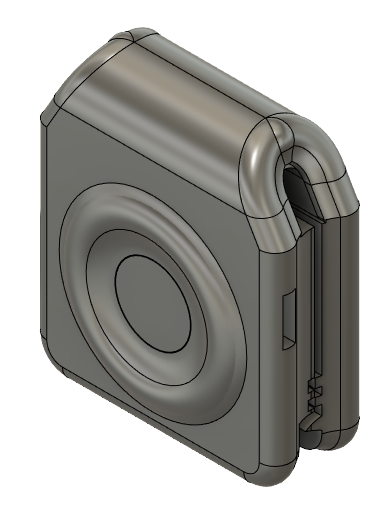
Square living hinge design
User testing models
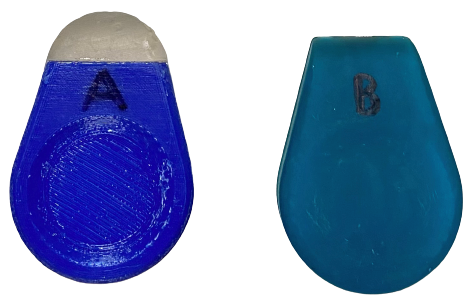
3D-printed models sent to user tests
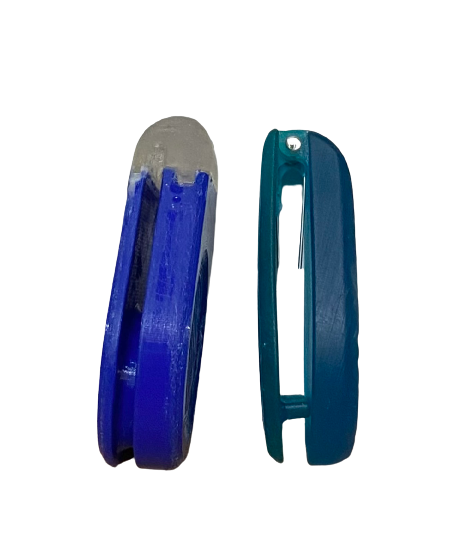
Phase 2 Development
Phase 2 development focused on implementing our user feedback. Our user testing consisted of volunteers from the Northeastern runner's club, who clipped our prototypes onto their clothing as they went for runs. We then found that the spring loaded hinge was able to hold better onto clothing during their runs and moved forward with this design.
Phase 2 development also focused on the electronics enclosure design and integration with the outer casing geometry. Working with the EEs on PCB placement & geometry, I designed an electronics housing, which also created the interface between the large outer button with the circuit board button.
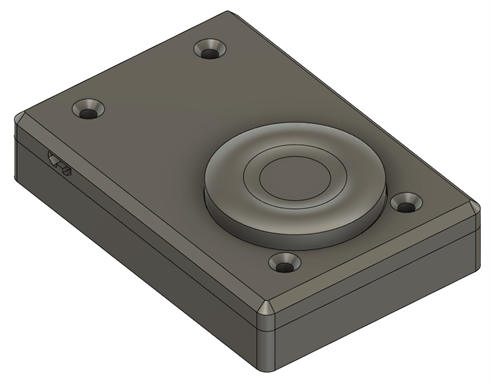
Electronics enclosure
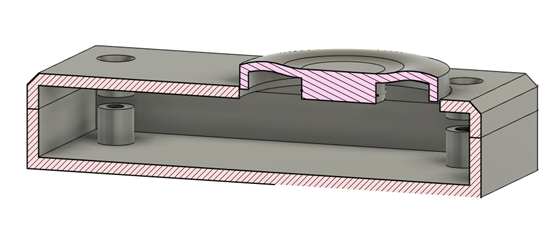
Main Challenges
-Prototyping living hinge with 3D-printed parts
-Leaving room for size and shape changes as the electrical development was ongoing
-Material selection for the device which would require heavy skin contact
The Result
The final design, handed off to the client, was an "avocado" shaped clip, which was composed of two rigid parts connected at the joint by a torsion spring. These rigid parts were designed to be over-molded in silicone. The button itself was designed so that it was sunken into the device, making it easy to find and press without needing to look, while also deterring accidental pressings.
Rendering of final design
Functionality of our product design explained through a user experience map
